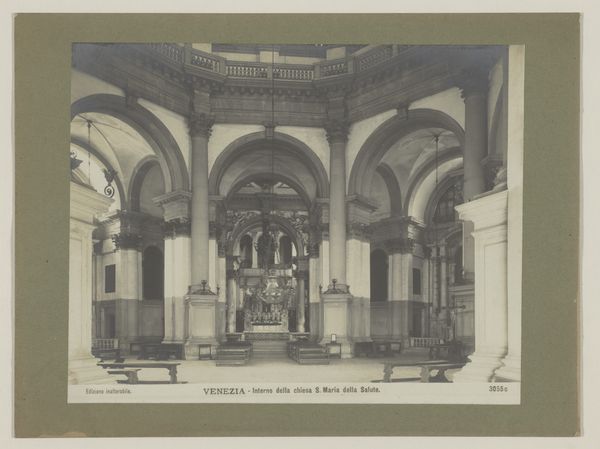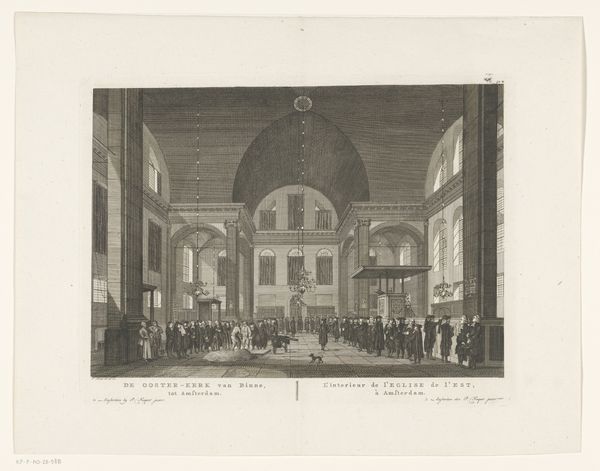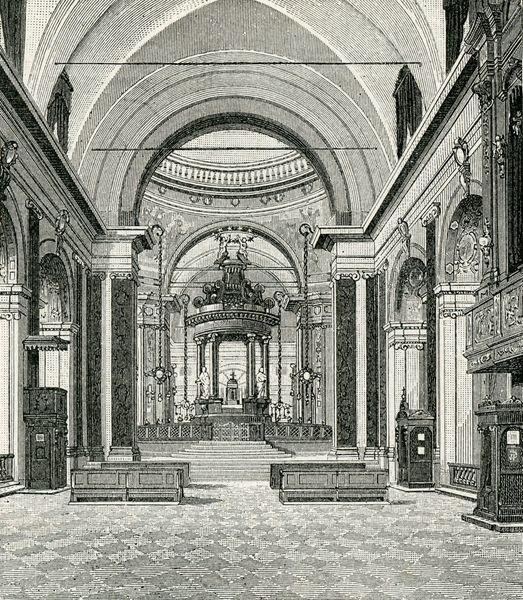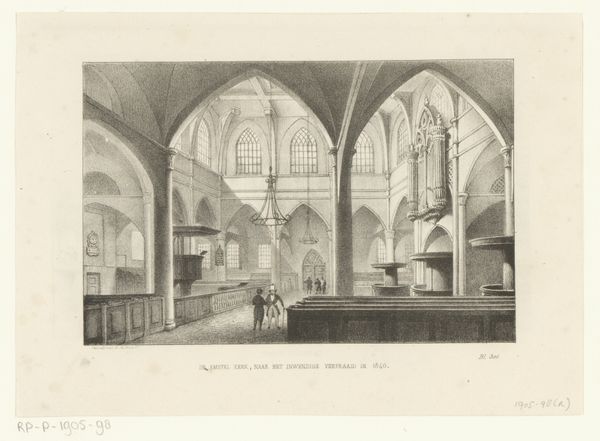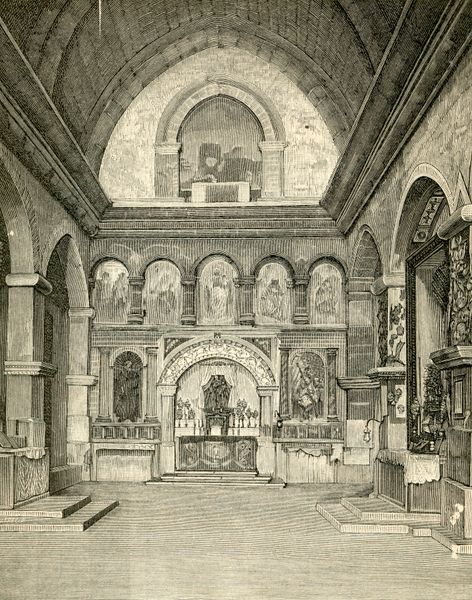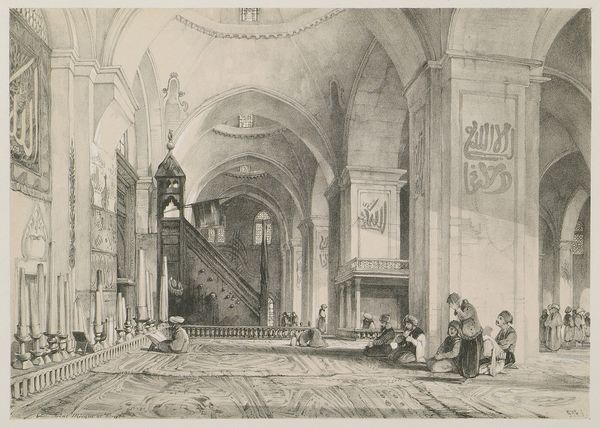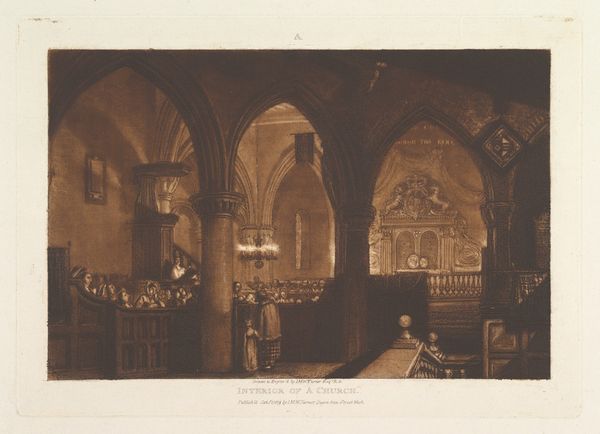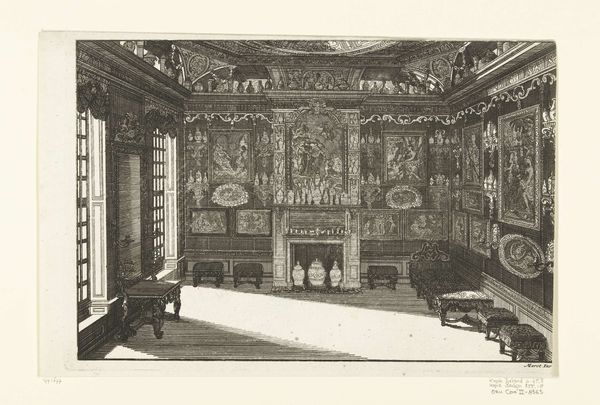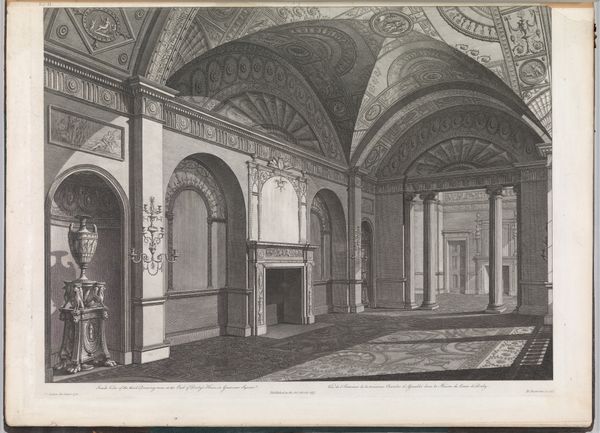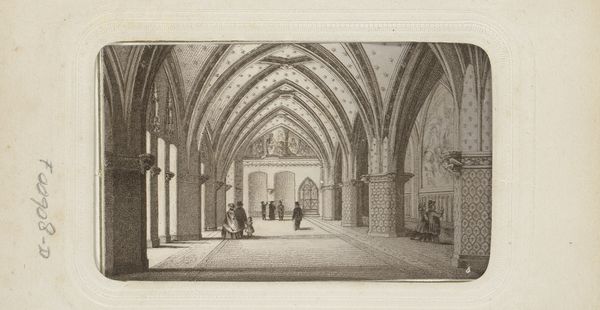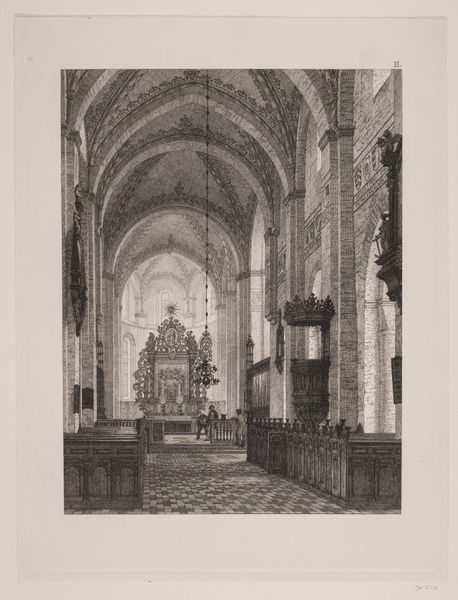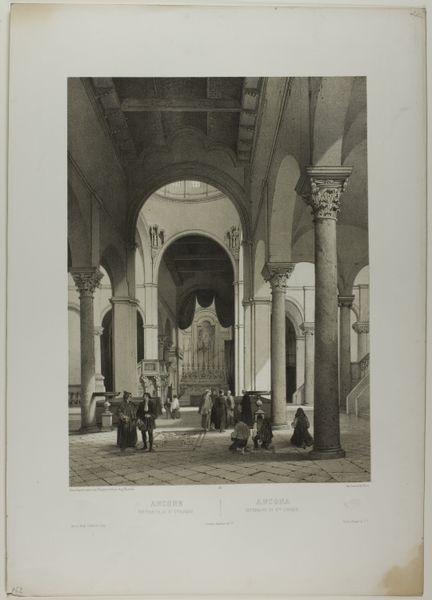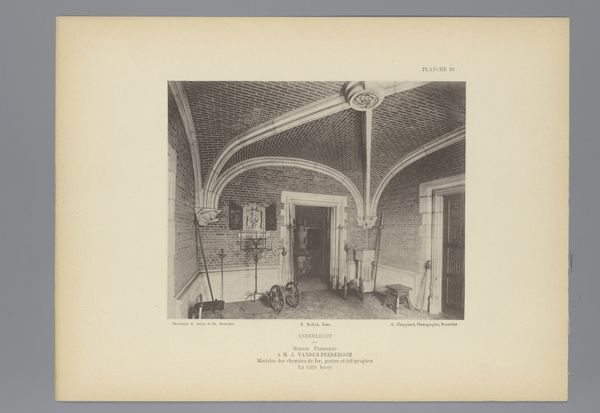
engraving, architecture
#
dutch-golden-age
#
perspective
#
line
#
engraving
#
architecture
Dimensions: height 300 mm, width 350 mm
Copyright: Rijks Museum: Open Domain
Editor: Here we have Pieter van den Berge’s "Interior of the Noorderkerk in Amsterdam," an engraving created sometime between 1694 and 1737. It's incredible to see this architectural space captured in such detail. What strikes me is the depth he achieves. What aspects of the image do you find most compelling? Curator: The emphasis on linear perspective is undeniable. Van den Berge’s orchestration of orthogonal lines, converging toward a vanishing point, directs the viewer’s gaze deep into the architectural space. The architecture’s rhythm, through the repetitive archways, establish both a harmony and systematic method of composition. Editor: So, you are drawn to the visual structure rather than its context or history? Curator: Indeed. While historical context informs our understanding, I prioritize the artwork's formal elements. Consider the calculated use of light and shadow; they define the architectural volumes. Also, the framing, what are your thoughts? Editor: I had not considered the frame to be an active player in the design. How does it alter your reading of the art work? Curator: It invites contemplation on boundaries, both physical and metaphorical. The frame demarcates the artwork, intensifying the viewers awareness of pictorial space versus reality. By considering these elements and their interactions, we can glean insights into Van den Berge's artistic intentions. Editor: This focused visual analysis provides such clarity. It enriches my perspective beyond just a surface level understanding. Curator: Precisely. Appreciating the visual language unlocks deeper meaning within the art.
Comments
No comments
Be the first to comment and join the conversation on the ultimate creative platform.
